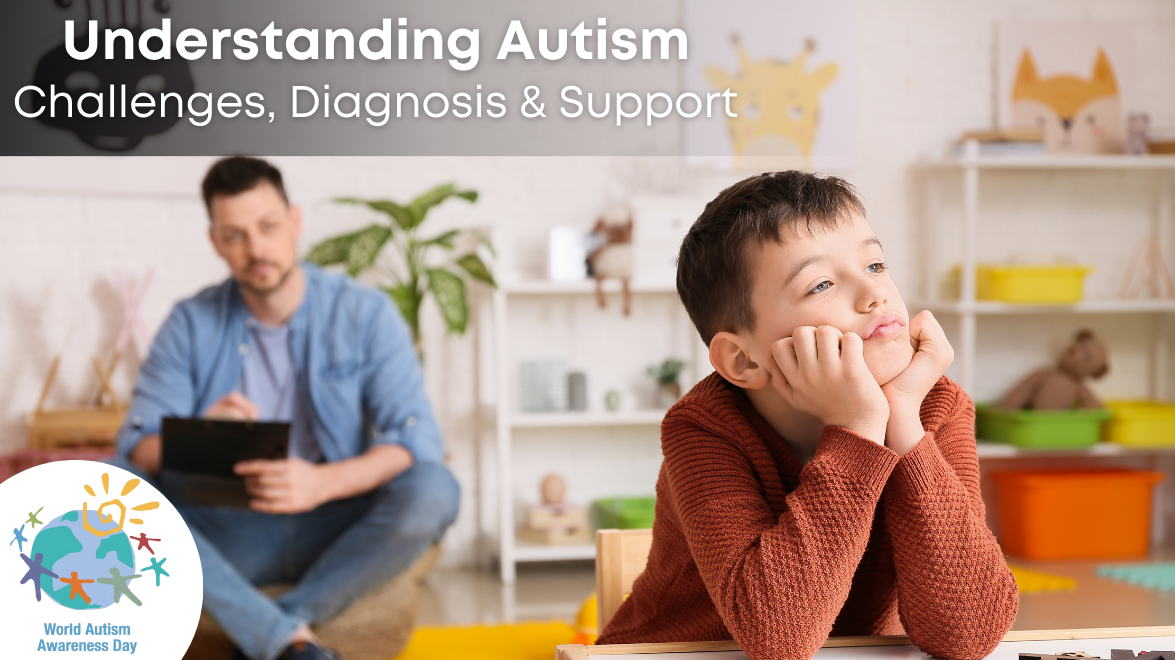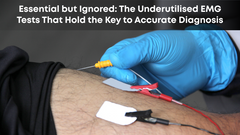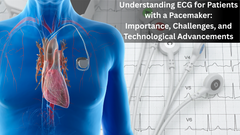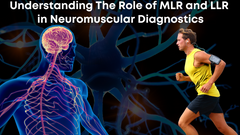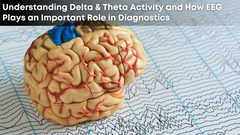Understanding Autism: Challenges, Diagnosis & Support
Autism spectrum disorder (ASD) is a complex neurodevelopmental condition that affects individuals' social interactions, communication skills, and behaviour. As awareness about autism grows, so does the need for understanding, support, and acceptance for individuals on the autism spectrum. World Autism Awareness Day, observed annually on April 2nd, serves as a platform to promote autism awareness, acceptance, and inclusion. In this article, we will delve into the fundamentals of autism, including its definition, challenges faced by autistic individuals, diagnosis methods (including the role of EEG), government and NGO initiatives for support, and the importance of World Autism Awareness Day.
What is Autism?
Autism, or autism spectrum disorder (ASD), is a developmental disorder characterized by persistent deficits in social communication and interaction, as well as restricted, repetitive patterns of behaviour, interests, or activities. The term "spectrum" reflects the wide range of symptoms and severity levels observed in individuals with autism. While some individuals may have mild difficulties and lead relatively independent lives, others may require significant support in daily activities.
Types and Severity of Autism
Autism spectrum disorder encompasses a broad range of symptoms and severity levels, including:
> Autistic Disorder (Classic Autism): Individuals with autistic disorder exhibit significant impairments in communication, social interaction, and behaviour. They may have delayed language development, difficulty forming relationships, and engage in repetitive behaviours or intense interests.
> Asperger's Syndrome: Asperger's syndrome is characterized by milder symptoms compared to classic autism, with individuals often displaying normal to above-average intelligence and language development. However, they may still struggle with social interaction, nonverbal communication, and sensory sensitivity.
> Pervasive Developmental Disorder Not Otherwise Specified (PDD-NOS): PDD-NOS is a diagnosis used for individuals who display some symptoms of autism but do not meet the criteria for autistic disorder or Asperger's syndrome. It is often referred to as "atypical autism" and may involve varying degrees of impairment across different areas of functioning.
Challenges Faced by Autistic People:
Autistic individuals may encounter various challenges in their daily lives, including:
> Social Communication Difficulties: Difficulty understanding and interpreting social cues, maintaining eye contact, engaging in reciprocal conversation, and understanding nonverbal communication (e.g., facial expressions, body language).
> Restricted and Repetitive Behaviours: Engagement in repetitive tasks or rituals, insistence on sameness, narrow interests, and sensory sensitivities (e.g., hypersensitivity to sounds, textures, or lights).
> Difficulty with Transitions: Difficulty adapting to changes in routines or environments, leading to anxiety or distress.
> Sensory Processing Challenges: Heightened or diminished sensitivity to sensory stimuli, which can lead to sensory overload or sensory-seeking behaviours.
> Co-occurring Conditions: Many individuals with autism have co-occurring conditions, such as intellectual disabilities, epilepsy, ADHD, anxiety disorders, or depression, which can further complicate their experiences and support needs.
How Autism Can be Diagnosed:
Diagnosing autism involves a comprehensive evaluation by healthcare professionals, including developmental paediatricians, child psychologists, or psychiatrists. Diagnosis typically involves the following steps:
> Developmental History: Healthcare providers gather information about the individual's developmental milestones, social communication skills, behaviour patterns, and family history.
> Observational Assessment: Direct observation of the individual's behaviour and interactions in various settings, such as home, school, or clinical settings, helps identify autism-related symptoms.
> Standardized Assessment Tools: Standardized assessment tools, such as the Autism Diagnostic Observation Schedule (ADOS) and the Autism Diagnostic Interview-Revised (ADI-R), are used to assess social communication skills, behaviour patterns, and developmental history.
> Collaborative Evaluation: A multidisciplinary team approach, involving professionals from different disciplines (e.g., paediatricians, psychologists, speech therapists), ensures comprehensive evaluation and accurate diagnosis.
Role of EEG in Diagnosing Autism:
Electroencephalography (EEG) plays a valuable role in diagnosing autism by measuring and recording electrical activity in the brain. EEG can detect abnormalities in brainwave patterns and connectivity associated with autism, such as:
> Atypical Brain Connectivity: EEG studies have shown differences in functional connectivity patterns between autistic and neurotypical individuals, particularly in regions involved in social cognition, language processing, and sensory integration.
> Altered Brain Oscillations: Abnormalities in brain oscillations, such as increased theta or delta activity and reduced alpha or beta activity, have been observed in individuals with autism, suggesting disruptions in neural synchronization and information processing.
> Sensory Processing Differences: EEG studies have identified differences in sensory-evoked responses and event-related potentials (ERPs) in autistic individuals, reflecting altered sensory processing and integration of sensory information.
> Brain Plasticity: EEG studies examining neural responses to social stimuli or interventions have provided insights into brain plasticity and potential mechanisms underlying behavioural and cognitive changes in individuals with autism.
By integrating neurodiagnostic devices with clinical assessments and behavioural observations, healthcare professionals can enhance diagnostic accuracy, tailor interventions, and monitor treatment responses in individuals with autism.
What Government and NGOs are Doing for Autistic People:
Governments and NGOs around the world are implementing various initiatives to support autistic individuals and promote their inclusion in society. Some examples include:
> Legislation and Policy Initiatives: Governments enact laws and policies aimed at protecting the rights and promoting the well-being of autistic individuals, including laws mandating access to education, healthcare, employment, and community support services.
> Education and Awareness Campaigns: Governments and NGOs conduct education and awareness campaigns to raise public awareness about autism, dispel myths and misconceptions, and promote acceptance and inclusion of autistic individuals in schools, workplaces, and communities.
> Community Support Services: Governments and NGOs provide a range of community support services, including early intervention programs, behavioural therapy, social skills training, vocational rehabilitation, and respite care, to meet the diverse needs of autistic individuals and their families.
> Research Funding and Advocacy: Governments allocate funding for autism research and advocacy initiatives to advance scientific knowledge, develop evidence-based interventions, and address gaps in services and supports for autistic individuals.
> Collaborative Partnerships: Governments, NGOs, healthcare organizations, educational institutions, and advocacy groups collaborate to develop collaborative partnerships, share resources, and coordinate efforts to improve outcomes for autistic individuals and promote their full participation in society.
Importance of World Autism Awareness Day:
World Autism Awareness Day, observed annually on April 2nd, holds significant importance in raising awareness, promoting acceptance, and advocating for the rights and inclusion of autistic individuals worldwide. The day serves as a platform to:
> Raise Awareness: World Autism Awareness Day raises public awareness about autism, dispels myths and misconceptions, and educates communities about the diverse strengths and challenges of autistic individuals.
> Promote Acceptance and Inclusion: By promoting acceptance and inclusion, World Autism Awareness Day helps combat stigma, discrimination, and social barriers that prevent autistic individuals from fully participating in society.
> Advocate for Support and Services: World Autism Awareness Day advocates for increased support, services, and resources for autistic individuals and their families, including access to education, healthcare, employment, and community support services.
> Celebrate Neurodiversity: World Autism Awareness Day celebrates neurodiversity and recognizes the unique talents, strengths, and perspectives of autistic individuals, contributing to a more inclusive and accepting society.
Conclusion
Autism spectrum disorder (ASD) is a complex neurodevelopmental condition that presents unique challenges and opportunities for individuals, families, communities, and society as a whole. By raising awareness, promoting acceptance, supporting research, and advocating for inclusive policies and practices, we can create a more inclusive and supportive world for autistic individuals. World Autism Awareness Day serves as a powerful reminder of our collective responsibility to embrace diversity, promote acceptance, and ensure that every individual, regardless of neurotype, has the opportunity to thrive and reach their full potential.


